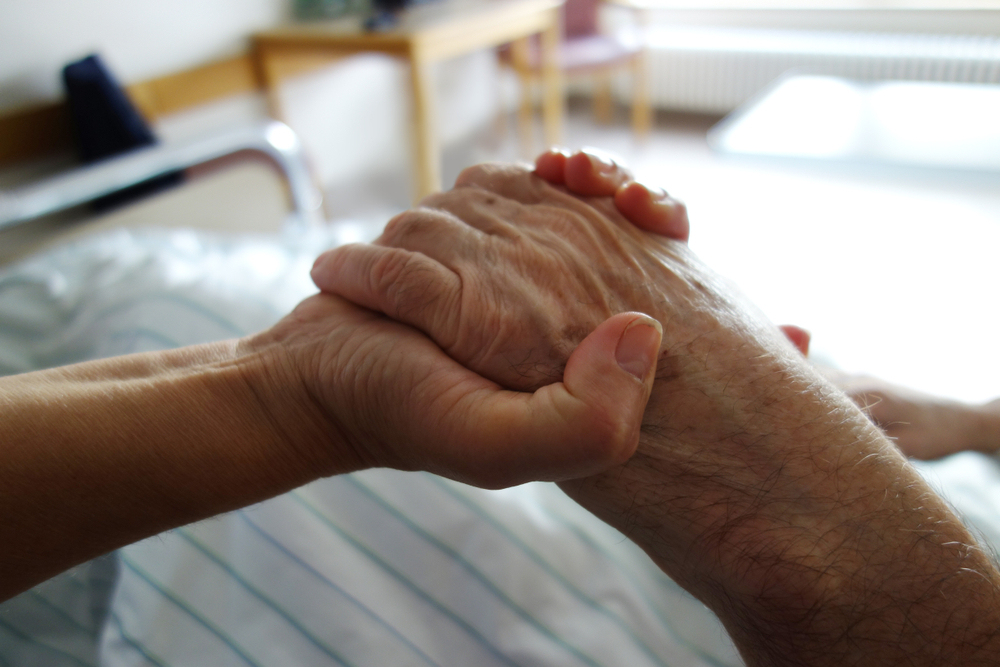“You know what your life is worth to you. And mine is worthless,” said Mitchell Tremblay, a 40-year-old Canadian man battling severe mental illness and intent on using his country’s medical suicide program to end his life as soon as possible. Currently, 10 states and Washington, D.C., allow physicians to assist their patients in committing suicide. Abroad, numerous European countries have legalized it, and in Canada, not only have they embraced medical suicide but they have also substantially moved the death conversation into appalling, new territory.
This March, Canada’s medical assistance in dying (MAID) program will expand its “clientele” to include people like Michael who are battling mental illness, as well as “mature minors” (a nebulous term not necessarily tied to an age or fixed maturity milestones).
Recently, Richard Hanania, author and researcher, sought to make a case for conservatives to support programs like MAID, suggesting that in the interest of individual freedom and dignity, endorsing the practice of euthanasia is a natural extension of one’s liberty ideals.
Important to the conversation is understanding the two primary ways medical suicide is offered. In the United States, physician-assisted suicide (PAS) is legal, but euthanasia is not. PAS allows a doctor to distribute a lethal drug to a patient, so the individual can take it at a later time. Euthanasia is when the doctor administers the lethal drug directly, being present at the time of death.
According to available data from Oregon’s physician assisted suicide (PAS) program between 1998 and 2016, the vast majority of those who committed suicide with medical assistance chose to do so because of a significant loss of quality of life. Of those surveyed, 90% said daily activities were no longer enjoyable, 92% cited their loss of autonomy, and 79% appealed to their desire for a death with dignity. Twenty-five percent cited lack of adequate pain control as a reason for their choice.
The talking point many euthanasia advocates rely on when promoting medical suicide is an appeal to dignity. For them, the term “death with dignity” has become a PR parlor trick, anesthetizing the consciences of the public to the macabre and consequentialist nature of suicide. The narrowness with how dignity is defined is telling; assigning human value to the way and time someone dies, rather than characterizing their worth as inherent to their very being as an individual created in the image of God. The moral and public policy consequences for mainstreaming such a malnourished understanding of human worth will be enormous.
The death with dignity argument reveals a devastatingly insufficient, utilitarian concept of the Christian understanding of dignity, which is inextricably tied to the imago Dei: the image of God imprinted upon each of us. We have worth and value that transcends our circumstances and station in life. A telos that is tied to serviceability, however, not only runs contrary to Christian teaching but also evaluates a person’s worth based on an absence of suffering or their degree of burden on others, which risks overlooking competing concerns.
Where medical suicide becomes an acceptable option, considerations like whether a person’s pain management plan is adequate (if the condition is physical), a loving support system, access to timely healthcare, and if their current suffering is treatable are more likely to become afterthoughts. In crowded healthcare systems like Canada’s, efficiency is prized. What chance do the vulnerable stand when efficiency means the cost-benefit analysis of their life’s value has tipped in favor of death? With the expansion of euthanasia to include nonterminal physical illness and mental health battles, we owe it to those who are afflicted to ask such questions.
Unfortunately, repeated government interventions in the healthcare market, and in some cases outright takeover, has made matters worse for citizens. Excessive bureaucracy has distorted the signals that researchers, investors, and medical professionals need to understand where the greatest needs are and how to appropriately allocate scarce resources. Government control in healthcare has also led to unconscionable wait times, which have been shown to have a negative impact on patient outcomes. In 2022, Canada topped its own record of longest patient wait times, rising to an appalling 27.4 weeks to see a specialist.
Why should we give governments, especially those that have forsaken any semblance of an open market, a free pass on their responsibility to care for and provide innovative and cutting edge quality-of-life-enhancing drugs and services to their citizens? These governments, who have failed so miserably in providing timely and innovative care, should not get to cover up their disastrous policies with clever messaging in an attempt to numb the public of their horrifying ineptitude. Unsurprisingly, the growing acceptance of medical suicide has also led to a rise in self-initiated suicides in regions where PAS is legal. Society will reflect what it celebrates.
Although there will come a point when each of us will leave this earthly life, it is important to remember that we live in a time of significant medical optimism. This is especially important to bear in mind as the euthanasia option becomes a more socially accepted escape from physical and mental battles.
There are emerging treatments for cancer, Alzheimer’s, and diabetes that show promise of prolonging lifespans and reversing the course of these devastating diseases. Mental healthcare access is expanding as new therapies and telehealth options become mainstream. Our justified intolerance of human suffering has led to medical breakthroughs that will keep individuals healthier and families together longer. We should celebrate these advances and the meaningful memories they help facilitate. Tragically, there are times that access to these therapies and treatments are stuck in bureaucratic limbo by governments insistent on centrally planning their healthcare markets.
Serena Bains, a 24-year-old Canadian woman suffering from severe mental illness, recently sat for an on-camera interview to discuss the difficult position her government has put people like her in: “[The government] can’t cause my suffering and then say, ‘Here’s the solution; feel free to choose your death.’ I don’t know if the person who causes your pain … [I don’t know if ] you would thank them if they relieved you of it by ending your life.” For years Serena has struggled to receive access to therapists and treatments to help her manage her illness, but the wait times have drawn out her suffering. She is afraid that in a moment of weakness and suicidal ideation, she will be tempted to choose MAID.
For Serena and others like her, MAID is not a first choice. It is a desperate attempt to find some measure of relief.
Twentieth-century German Catholic philosopher Josef Pieper suggested that what we really long for is love and what we truly desire to hear is, “It is good that you exist.” During the lowest moments of a person’s life, when they desperately need comfort and assurance from those closest to them, they ought to experience the faithful care of loved ones.
When euthanasia enters the conversation, the lens for making decisions slides away from this truth and uses a narrow and incomplete notion of dignity as a litmus for whether someone should continue to exist. Physician-assisted suicide looks at the man or woman who is in distress and says: “It is not good that you exist.” Suffering and societal convenience become the ultimate arbiters of what is good.
Unfortunately, dignity has become a buzzword, stripped of its metaphysical meaning and invoked as a way to assuage the unease of advocating for suicide. Pope John Paul II, writing in Evangelium Vitae, attacked the bankruptcy of this hollowed out version of dignity in medicine and science, writing, “With the new prospects opened up by scientific and technological progress there arise new forms of attacks on the dignity of the human being … broad sectors of public opinion justify certain crimes against life in the name of the rights of individual freedom, and on this basis they claim not only exemption from punishment but even authorization by the State.” It is from this sad perch of moral malnourishment that euthanasia’s proponents make their case for “individual liberty” and “death with dignity.” But what if we began asking new questions, such as “What duty do I have to my neighbor?” and “What claim does he or she have on me in their moment of great burden?”
Galatians 6:2 commands us to “Bear one another’s burdens and so fulfill the law of Christ.” What that looks like in the context of immense anguish and hopelessness will often mean being a faithful presence and witness to them. Suffering is difficult enough, but suffering alone can feel unbearable.
The emotional toll long-term physical or mental health challenges take on a person should not be minimized. Anyone who has suffered for extended periods or walked alongside a loved one knows how deeply discouraging and isolating those seasons can feel. It is in those moments when the sense of loneliness and uncertainty loom large that the death with dignity argument can sound especially alluring.
In a very short time, Canada will begin rolling out their most expansive euthanasia program to date, following countries like the Netherlands down a dark and bleak path. In the United States, euthanasia advocates will continue to clamor for relaxing existing laws. As attempts to normalize medical suicide grow, we must ask, “What do I owe those in my life who are facing immense pressure and suffering?” During someone’s darkest hours, when they no longer feel strong enough to go on, will they find care and compassion in our friendship and presence? Will we tell them that it is good that they exist?

